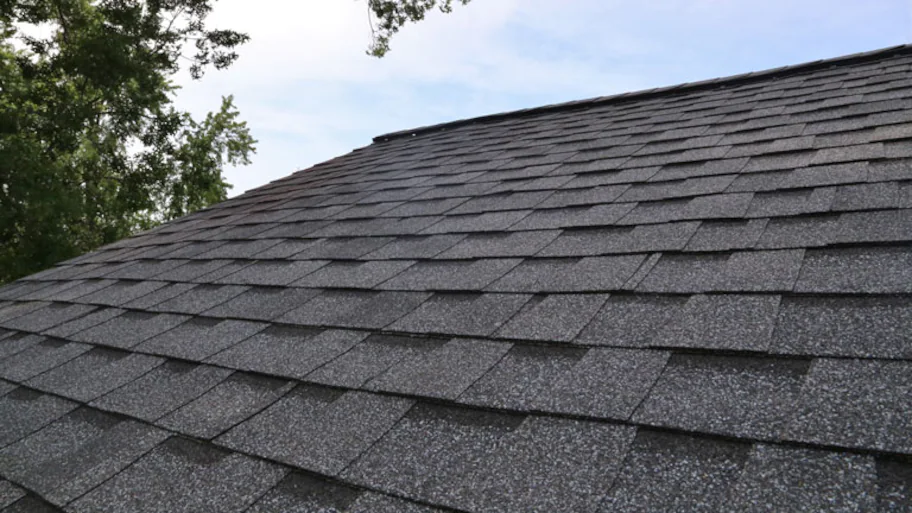Exactly How Gainesville Roofing Companies Can Transform Your Home's Outside
Exactly How Gainesville Roofing Companies Can Transform Your Home's Outside
Blog Article
Finest Practices for Ensuring Proper Roof Air Flow
Making certain proper roof covering air flow is crucial for the durability and effectiveness of a roof. A well balanced intake and exhaust air vent ratio, typically 1:300, plays a crucial role, with consumption vents ideally positioned at the lower edge of the roofing for cool air entrance and exhaust vents at the optimal for warm air exit. Normal evaluations to identify clogs and maintain clear air flow are paramount. Additionally, keeping insulation far from vents is essential to stop airflow limitation. Comprehending these fundamental components establishes the stage for more comprehensive understandings into installation and upkeep practices that can dramatically improve your roof's efficiency.
Understand Air Flow Basics
Effectively comprehending ventilation essentials is crucial for ensuring the longevity and effectiveness of roof systems. Reliable ventilation minimizes dampness accumulation and temperature level extremes in the attic room, both of which can bring about considerable architectural damage over time. A well-ventilated roofing system assists in preventing common problems such as mold growth, wood rot, and ice dams, which can endanger the integrity of the roof covering materials and the underlying structures.
The key goal of ventilation is to promote the activity of air, allowing for a consistent exchange in between the exterior and indoor settings. This balance is attained via a combination of intake and exhaust vents that work with each other to keep optimum air flow. Intake vents, generally situated along the eaves or soffits, enable fresh air to enter the attic room space, while exhaust vents, usually situated at or near the roof covering ridge, allow hot, moist air to leave.
Secret aspects influencing the effectiveness of roofing system air flow consist of proper placement, ample sizing, and making certain that both consumption and exhaust vents are unhampered. Routine assessment and maintenance are essential to determine possible clogs, damage, or inadequacies in the ventilation system, thereby guarding the roofing's efficiency and sturdiness.
Kinds Of Roofing Vents
Roofing vents play a critical duty in preserving efficient attic air flow and, by expansion, the total health of the roofing system. Numerous kinds of roofing system vents are offered, each with distinct benefits tailored to certain roof demands.

Soffit vents are set up under the eaves and job in tandem with roof vents to ensure a well balanced intake and exhaust system. By permitting cooler air to enter from below, soffit vents help with the expulsion of warm air via upper vents. Gable vents, located on the outside wall surfaces of the attic, offer an additional effective remedy, particularly in homes with gable roofings.
Assess Your Existing Ventilation

Following, consider the age and problem of your roof materials and ventilation elements. Older systems might not follow existing structure codes or may have deteriorated over time, lowering their performance. Conduct a thorough assessment to determine any kind of indicators of damage, such as rust, damage, or spaces that might endanger the system's performance.
In addition, gauge the attic room temperature and moisture degrees. High temperatures and moisture can indicate insufficient ventilation.
Setup Best Practices
Reliable installation of roofing ventilation systems is critical for ensuring ideal efficiency and durability. Correct installment begins with understanding the particular ventilation demands of the structure and the roofing system it covers. This entails computing the right proportion of consumption to wear down vents, typically adhering to the 1:300 regulation, which states one square foot of ventilation for each 300 navigate to this website square feet of attic room floor space.

Intake vents should be set up at the roof's reduced edge, typically in the soffits, to permit great air to get in. Exhaust vents, on the other hand, should be set up near or at the roofing's peak to facilitate the departure of cozy, damp air.
Seal all vent connections thoroughly to avoid air leakages and possible water infiltration. Use premium materials and comply with maker standards to make sure durability and performance. In addition, integrating ridge vents with baffles can substantially enhance airflow efficiency by protecting against wind-driven rainfall and snow from getting in the attic.
Eventually, exact setup of roof covering ventilation systems alleviates potential issues such as mold growth, ice dams, and structural damage, making certain the roof's stability and the building's general health.
Normal Maintenance Tips
Uniformity in maintenance practices is fundamental to ensuring the lasting performance of roofing air flow systems. Regular examinations are crucial, preferably performed biannually-- in the spring and loss. Throughout these examinations, ensure that vents are useful link totally free of debris, nests, and other blockages that might hamper airflow. Check for any indicators of dampness accumulation or mold, as these can indicate improper air flow or leakages (roofing companies gainesville florida).
Cleansing the vents is another essential task. Use a soft brush or a vacuum to remove dirt and debris from intake and exhaust vents. Beware not to harm the air vent displays or louvers throughout the process. Additionally, inspect the attic room area for any type of indications of water damage, which might jeopardize the stability of the roof.
Appropriate insulation is equally crucial. Make sure that attic room insulation does not obstruct the vents, as this can badly restrict airflow. Rearrange or change it to keep a reliable obstacle. if any kind of insulation has shifted or resolved.
Last but not least, replace any kind of damaged or missing out on elements without delay. Busted vents, fractured shingles, or tatty blinking can all add to inadequate ventilation and must be resolved right away. Routine maintenance ensures that the roof covering ventilation system works efficiently, therefore expanding the life-span of the roof itself.
Verdict
Making sure appropriate roofing ventilation is extremely important for maintaining the efficiency and toughness of a roofing system. Adherence to the 1:300 consumption and exhaust vent ratio, coupled with the critical placement of vents, is important. Normal biannual inspections, debris cleansing, and making sure insulation does not obstruct air flow are critical practices. Applying these best methods will certainly promote a well-ventilated roofing system, thereby minimizing possible problems connected to moisture buildup and too much heat, eventually lengthening the roofing's lifespan.
A well balanced consumption and look at these guys exhaust vent ratio, generally 1:300, plays an essential duty, with consumption vents preferably put at the lower edge of the roofing for awesome air entrance and exhaust vents at the peak for cozy air leave. Consumption vents, commonly situated along the eaves or soffits, enable fresh air to go into the attic room room, while exhaust vents, typically situated at or near the roof covering ridge, make it possible for hot, damp air to run away.
Soffit vents are set up under the eaves and work in tandem with roof vents to ensure a well balanced consumption and exhaust system. By permitting cooler air to go into from below, soffit vents facilitate the expulsion of hot air via upper vents. Adherence to the 1:300 intake and exhaust vent proportion, coupled with the critical placement of vents, is necessary.
Report this page